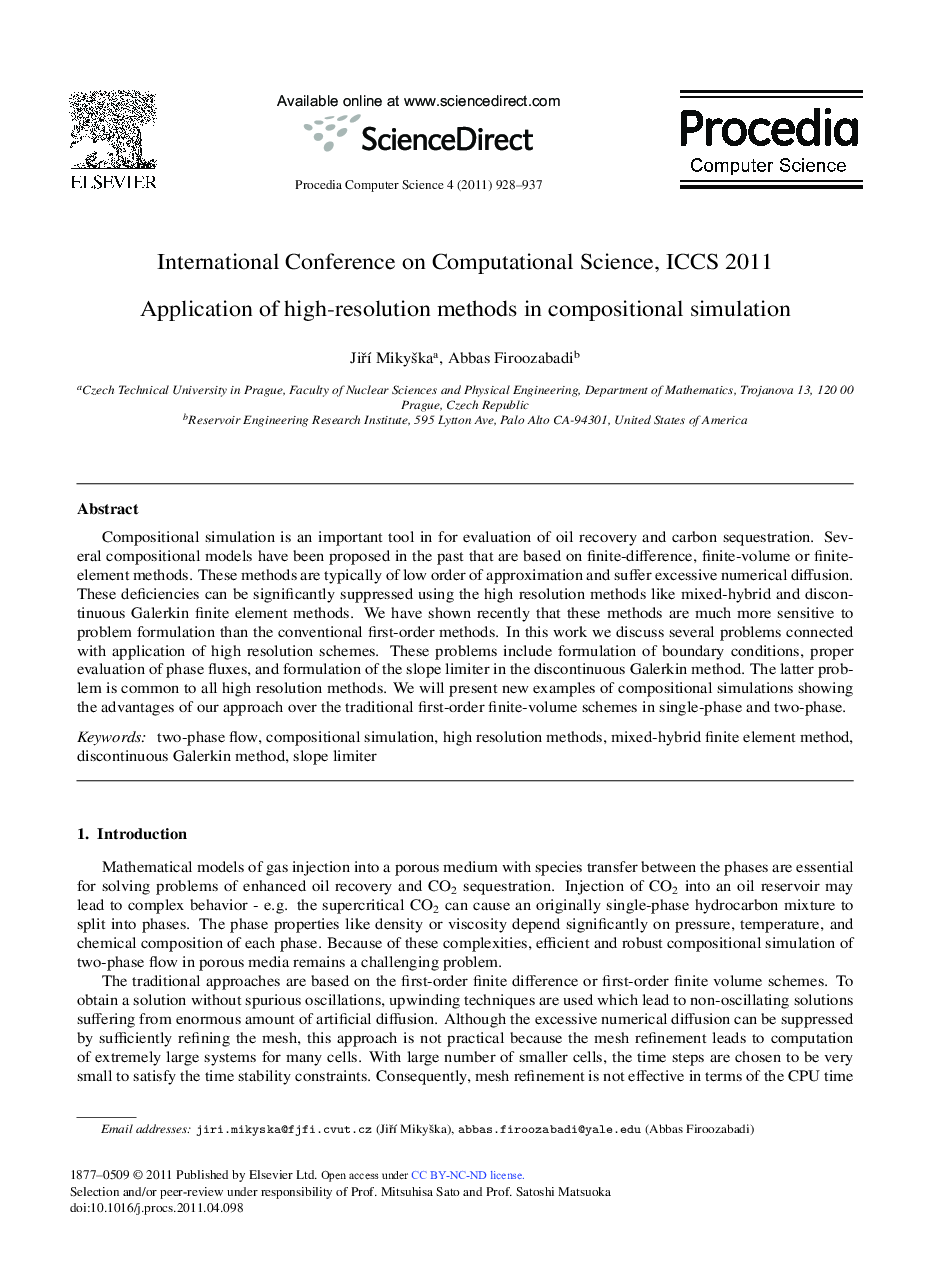| Article ID | Journal | Published Year | Pages | File Type |
|---|---|---|---|---|
| 488226 | Procedia Computer Science | 2011 | 10 Pages |
Compositional simulation is an important tool in for evaluation of oil recovery and carbon sequestration. Several compositional models have been proposed in the past that are based on finite-difference, finite-volume or finiteelement methods. These methods are typically of low order of approximation and suffer excessive numerical diffusion. These deficiencies can be significantly suppressed using the high resolution methods like mixed-hybrid and discontinuous Galerkin finite element methods. We have shown recently that these methods are much more sensitive to problem formulation than the conventional first-order methods. In this work we discuss several problems connected with application of high resolution schemes. These problems include formulation of boundary conditions, proper evaluation of phase fluxes, and formulation of the slope limiter in the discontinuous Galerkin method. The latter problem is common to all high resolution methods. We will present new examples of compositional simulations showing the advantages of our approach over the traditional first-order finite-volume schemes in single-phase and two-phase.
